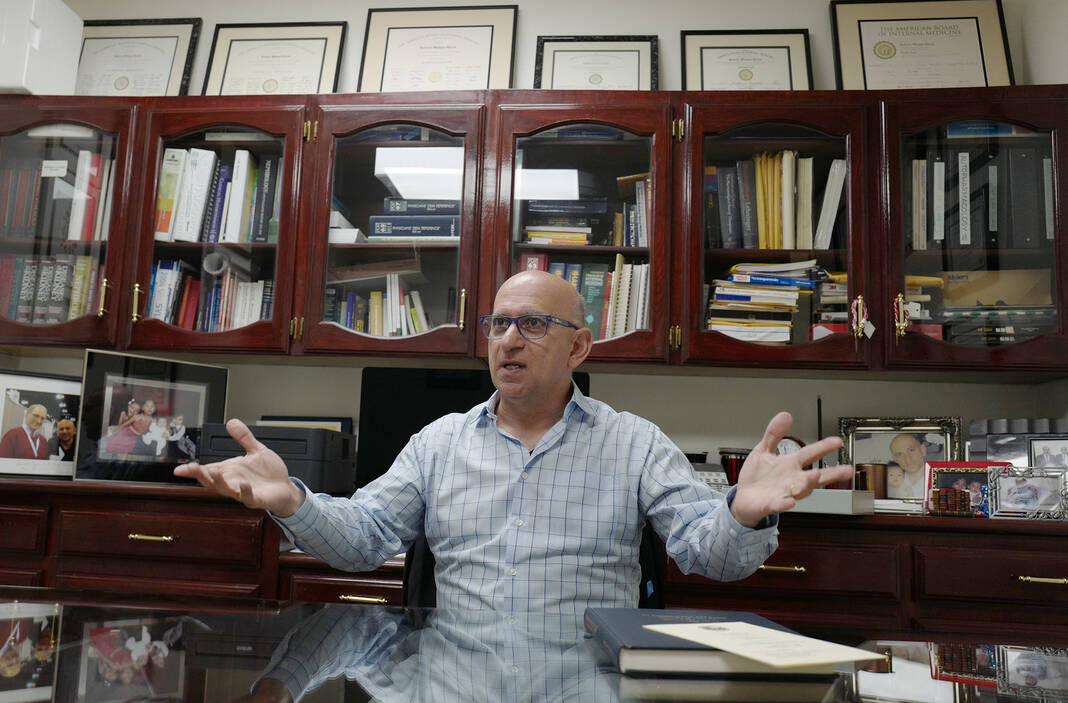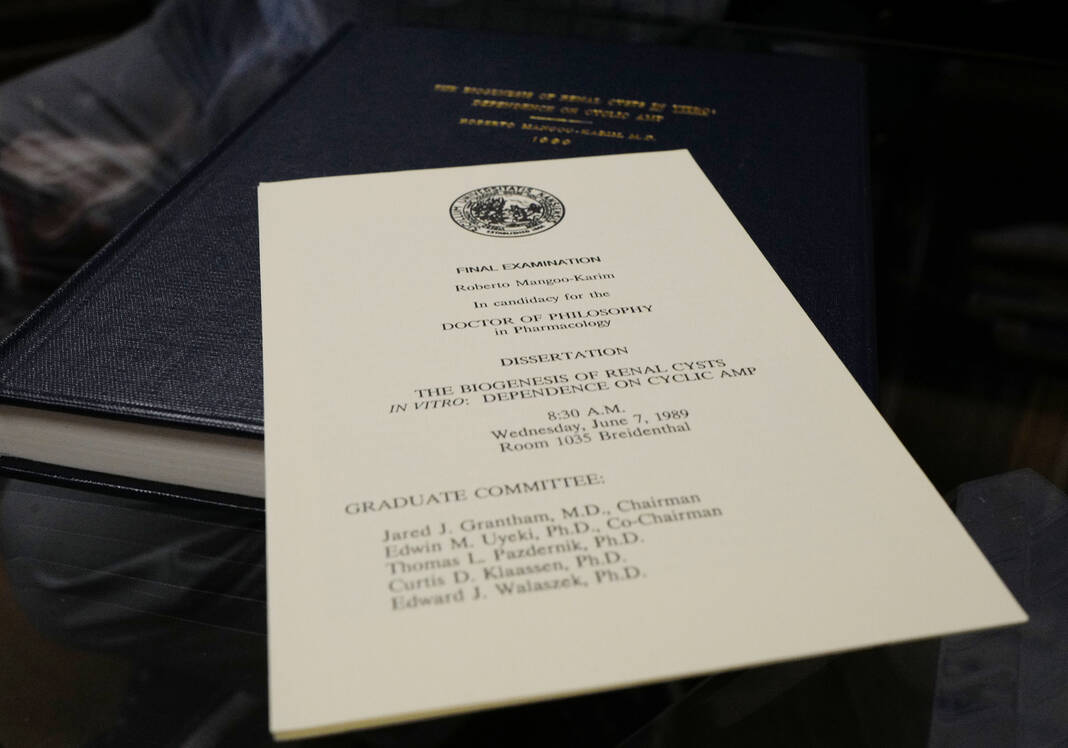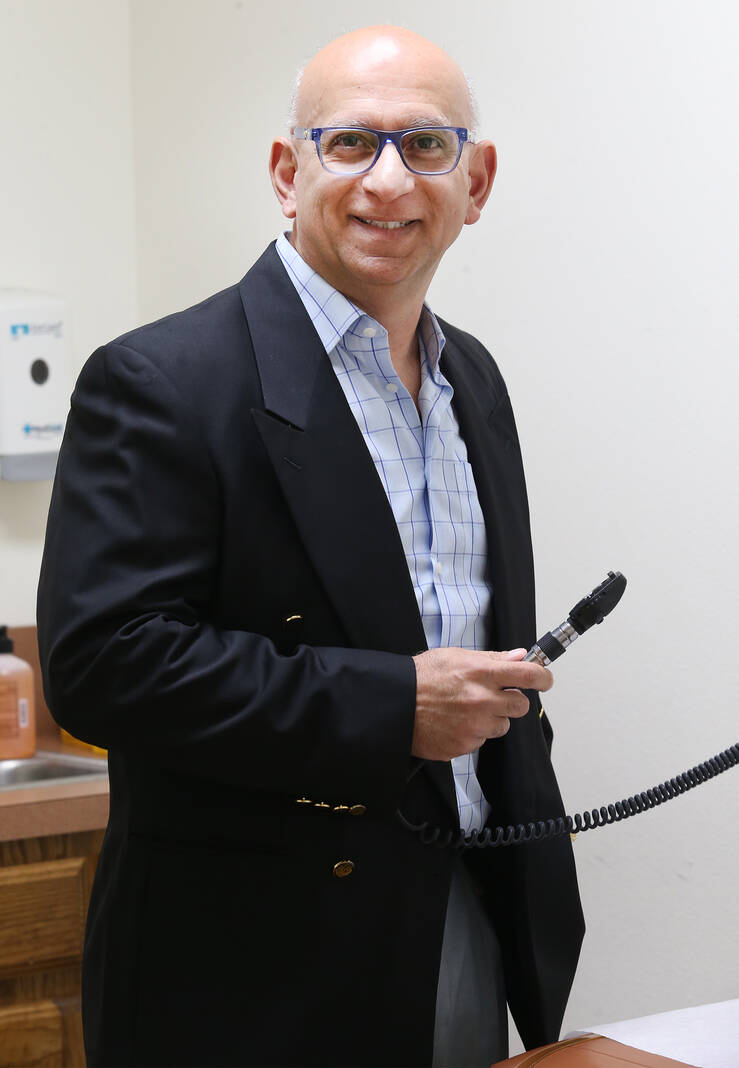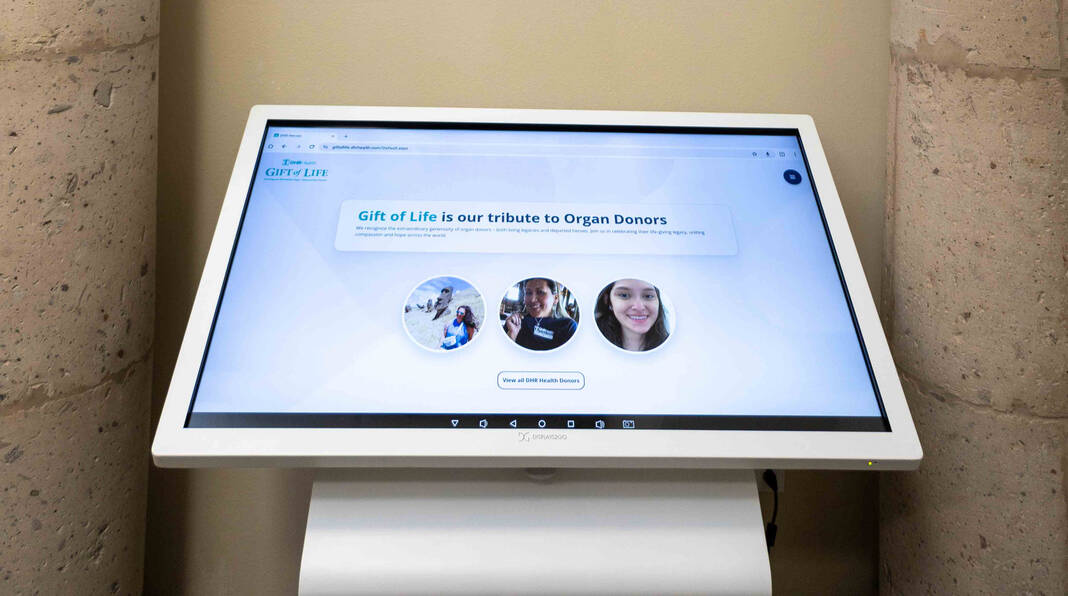One’s trajectory in life can often be changed by one simple moment. A moment that is sometimes overlooked as it’s happening but ends up being the decision that changes everything.
For Dr. Roberto Manllo-Karim, originally from Monterrey, Mexico, that moment occurred when he was just 15 years old at the Tecnológico de Monterrey, the university he attended, and eventually led him to make a discovery that saved lives.
During their “information day,” a time in which people talk about career paths, Manllo-Karim — a doctor at South Texas Kidney Specialists in McAllen — found himself standing in line for engineering.
“I was supposed to be an engineer like my brother or a businessman like my dad, but the line was too long,” Manllo-Karim said with a chuckle Thursday. “The med school just opened the year before, so the med school line had nobody. I’m 15 years old, I didn’t know what I wanted to do with my life, so I went in and talked to the physician that was on the medical school side.”
It was that decision that led him on his path in medicine.
Although he was attending the university’s medical school at the time, he still had an interest in engineering, so he chose to take computer programming classes.
It was those classes that led him to the University of Kansas where he studied pharmacology, the science to develop new medications, through computers.
When he was 17 years old he spent the summer in Kansas where he helped write computer programs to teach pharmacology.
“That’s when I met some of my mentors,” Manllo-Karim said. “I fell in love with pharmacology. I said this is what I want to do, I want to create new knowledge.”
He loved pharmacology so much he told the chairman that he wanted to quit medical school.
 Dr. Roberto Manllo-Karim, a nephrologist, talks about his time spent in the field and research at his office Thursday, June 20, 2024 in McAllen. (Delcia Lopez | dlopez@themonitor.com)
Dr. Roberto Manllo-Karim, a nephrologist, talks about his time spent in the field and research at his office Thursday, June 20, 2024 in McAllen. (Delcia Lopez | dlopez@themonitor.com)He also recalled the chairman laughing at him and telling him to finish med school and write him a letter once he was finished, because he would allow him to move on to his PhD as soon as he was finished.
That’s exactly what he did.
Throughout graduate school he focused his efforts on understanding polycystic kidney disease, a disease that affects half a million people in the county and fourth leading cause of kidney failure and needing dialysis.
He recalled his mentor, Dr. Jared Grantham, telling him that if he wishes to graduate he needs to write three papers that tell the story of how cysts develop in kidneys.
“My mentor said to me ‘Roberto, if there is no story to tell, I won’t let you graduate,’” Manllo-Karim said. “He said to me ‘make me a cyst, I don’t care if it has any relevance to medicine, I just need to know how to make a cyst. If you do that you graduate. If you don’t, you don’t.’”
Although the challenge did scare him, it pushed him to find a solution.
“Nobody knew. We had no idea what the disease was about,” Manllo-Karim said.
He remembered spending up to 16 hours a day, every day, researching the disease and its potential source.
“I opened the library everyday for like a month … I would be the first one in line. The librarian hated me,” Mangllo-Karim chuckled as he recalled the amount of journals he would read through.
By the end of the day he would accumulate around 40 to 50 books, and because he was usually the last one to leave it meant the librarian was left with the task of putting them back.
 Dr. Roberto Manllo-Karim at his office on Thursday, June 20, 2024 in McAllen. He has extensive experience in glomerulonephritis and nephropathy. (Delcia Lopez | dlopez@themonitor.com)
Dr. Roberto Manllo-Karim at his office on Thursday, June 20, 2024 in McAllen. He has extensive experience in glomerulonephritis and nephropathy. (Delcia Lopez | dlopez@themonitor.com)She may have hated him for it, but in the end he said it paid off.
Through his research he discovered that cyclic adenosine monophosphate, or cAMP, caused the cysts to get bigger and continued to develop.
As he continued his research he was able to find a way to prevent or delay the development of the disease.
He recalled the day he presented his thesis to his mentor and fellow colleagues.
“Monday (at the) 8 a.m. meeting with my mentor, of course the seniors start talking first, I’m the junior kid, and I start giving all this information (very fast) to the point that he couldn’t understand,” Manllo-Karim said with a laugh.
He remembered his mentor sitting in disbelief that in three months Manllo-Karim had managed to discover the cause of the disease and its treatment.
After conducting three follow-up tests to prove his thesis it was finally ready for publication, or so he thought.
He gathered his thesis and pictures and left it on his mentor’s desk.
To his surprise, the next day he saw the thesis with red ink on his desk asking him to redo it. He went back and forth for a while until he could no longer find things to change.
“One day I go to him and said ‘Dr. Grantham, this is the best I can do.’ You know what he said to me? ‘OK, I’m going to read this one,’” Manllo-Karim said, adding that it was then he realized he had never read the previous copies.
 Dr. Roberto Manllo-Karim’s dissertation and thesis submitted for his PhD. (Delcia Lopez | dlopez@themonitor.com)
Dr. Roberto Manllo-Karim’s dissertation and thesis submitted for his PhD. (Delcia Lopez | dlopez@themonitor.com)After submitting it for publication it was accepted as is.
“It was a work of art on top of science,” he said.
His work was published in 1989.
“The only treatment available today is based on this (his thesis),” Manllo-Karim said, adding that 25 years later the medication became available.
Otsuka Pharmaceutical Co. developed a medication called Tolvaptan, also known by brand name JYNARQUE and others, which was approved by the U.S. Food and Drug Administration in 2018 as the first treatment to slow kidney function decline in adults at risk of rapidly progressing autosomal dominant polycystic kidney disease (ADPKD).
Not bad for someone who started his lab inside a closet, as he described it. But by the time his thesis was completed, he earned the credibility and his work went from being housed inside a small lab, to an entire floor.
Now there are two buildings dedicated to polycystic kidney disease with the University of Kansas being the leading researcher in that field, he said.
It also means he’s been able to help those close to him.
Take a friend who suffers from polycystic kidney disease, and whose family lost loved ones to the illness. That friend became Manllo-Karim’s first research patient.
“We cried a few times because he is concerned he had children who can carry the gene,” the good doctor said.
His friend agreed to the clinical trial before the medication was available and has been on it for more than a decade now.
 Dr. Roberto Manllo-Karim, a nephrologist (kidney specialist) who discovered polycystic kidney disease to be a genetic disease as well as the medication to address the illness, seen Thursday, June 20, 2024 in McAllen. (Delcia Lopez | dlopez@themonitor.com)
Dr. Roberto Manllo-Karim, a nephrologist (kidney specialist) who discovered polycystic kidney disease to be a genetic disease as well as the medication to address the illness, seen Thursday, June 20, 2024 in McAllen. (Delcia Lopez | dlopez@themonitor.com)As a result, his kidneys function the same as they did 10 years ago despite living with a disease that would have otherwise required him to be on dialysis by now.
“… He is very appreciative,” the doctor said of his friend.
This unexpected journey in medicine has introduced him to people he’s met along the way who he considers a blessing to him.
He keeps each of his mentors close to his heart with pictures of them and his accomplishments adorning his office walls, desks and even on his floor.
“That’s the success of life — surround yourself with the best people, ask for advice, work hard and all this happens,” Manllo-Karim said with a smile.
He explained that he is grateful to have been faced with those challenges and the impact it made in his life.
“This is a blessing, I cannot tell you how honored I was to be able to come up with a good idea that is helping humans today,” he added. “I never expected to achieve something this relevant.
“I made my dad proud. Isn’t that what we all want to do in the end?”
The post McAllen kidney doctor credits serendipity for major medical discovery appeared first on MyRGV.com.
 (2).png)
 3 months ago
104
3 months ago
104








 English (US)
English (US)